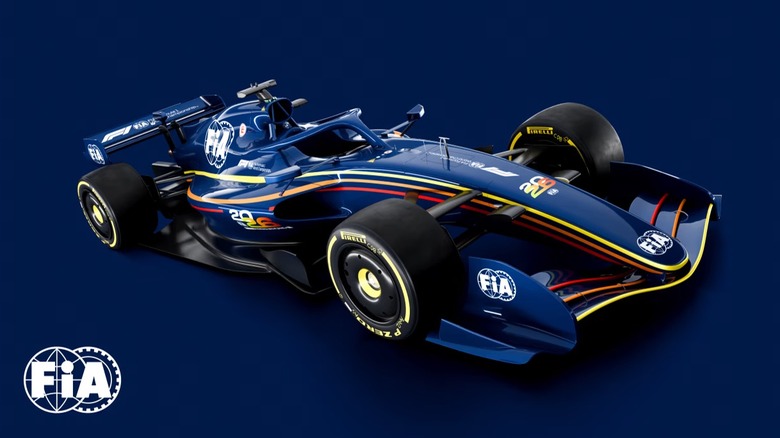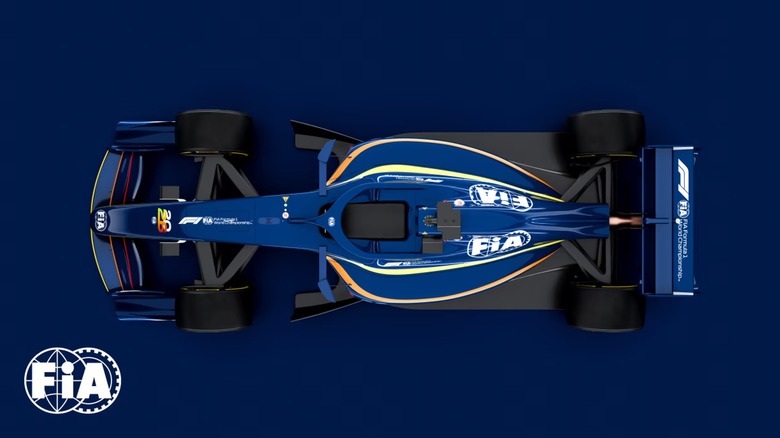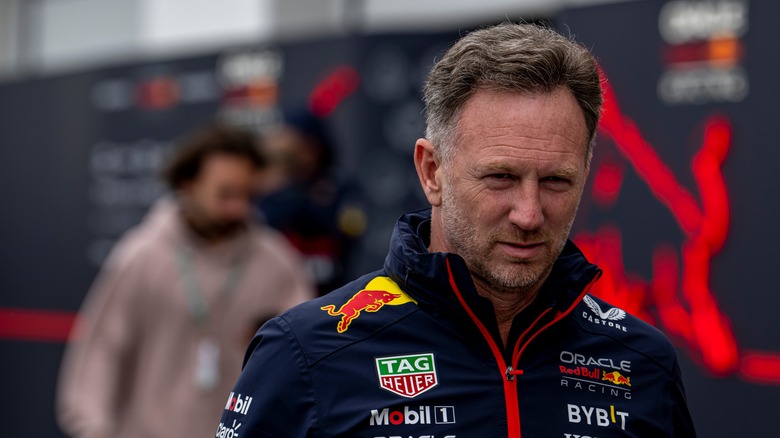F1 Engines Are Going To Look A Lot Different In 2026: Here's Why
Formula 1 cars are almost incomprehensibly complex pieces of machinery developed according to pages-upon-pages of technical requirements, regulations, and rules. The "formula" in Formula 1 can be thought of as that set of regulations, which all teams must abide by in order to compete. While Formula 1 has been the name of the top open-wheel racing series since 1946, the actual recipe for F1 cars has changed a number of times as new technologies emerge and time progresses. Those changes have ranged from dramatic, aerodynamic reworks to revised engine requirements, and another major Formula 1 rule set revolution is right around the corner in 2026.
While the rule changes will affect every aspect of 2026 to 2030 Formula 1 cars, the new powertrain regulations are a massive part of the equation. Some of the engine changes in the past have given F1 fans the most notable periods in the sport's history, including the turbo era of the mid-1980s, the 3.5-liter naturally aspirated era between 1989 and 1994, and the period of screaming V10s between 1995 and 2005. Formula 1 cars currently use 1.6 liter turbo-hybrid V6 engines which, while unpopular at first, have grown on fans over the years. They also marked a sizable shift towards an environmentally conscious era for F1, producing 26% less CO2 emissions than the outgoing naturally aspirated V8 engines. From 2026 on, Formula 1 intends to push the 1.6L V6 power unit even more towards complete sustainability by mandating an equal split between electric and internal combustion power and the use of completely renewable fuels.
The new engines will rely more on electric power
One of the most controversial aspects of the 2026 to 2030 power unit regulations is the decision to handicap the internal combustion engine in favor of increased electric power. Under the current rule set, there is close to an 80/20 split between internal combustion power and electric power. The proposed regulation for 2026 states that the split will be closer to 50/50, with nearly half of the projected 1,000 hp coming from an upgraded kinetic motor generator unit or MGU-K. To offset the increase in electric power, the internal combustion engine will be reduced to 535 hp from around 750 hp under the current regulations.
The energy recovery system on current Formula 1 engines has two main components: a kinetic motor generator unit (MGU-K) and a heat motor generator unit (MGU-H). The MGU-K generates and expends the majority of the electric power to the rear wheels while the MGU-H recovers energy generated by the turbocharger and uses that energy to help spin the compressor wheel in an effort to curb turbo lag. The 2026 regulations get rid of the MGU-H component altogether. Since the new MGU-Ks will be much heftier units, with an increased maximum deployment of 475 hp compared to 160 hp currently, they will harvest around four times as much energy under braking than the current unit, totaling between eight and nine megajoules per lap. To stop the cars from going too fast on the straights, the MGU-K deployment will taper at a designated speed. However, a new draft of the regulations mentions that drivers will have the ability to strategically override that artificial drop-off, giving them full power for a short period to attack or defend on track, similar to how the KERS system worked in past.
F1 engines will use 100 percent renewable fuels from 2026 onward
As if moving towards a more significant use of electric power wasn't enough, the 2026 regulations also outline that the new generation of power units will also use 100% renewable fuels. Renewable fuels aren't completely new to Formula 1, as even the current generation of cars use a small percentage of ethanol. As of 2022, the current generation of cars began using E10 fuel containing 10% renewable ethanol, which was a step up from the 5.75% renewable fuel used in the cars prior to that.
While sustainable fuel still creates CO2 as a byproduct of the combustion process, its production is offset by carbon that was removed from the atmosphere to create it in the first place, making it a net zero fuel. While the concept is simple, the execution is complex and relies on a number of cutting-edge technologies including carbon capture, processing municipal waste, or biomass conversion. To make things even more complicated, the fuel needs to be potent enough to provide the high-performance engines with enough power, while also abiding by much lower fuel consumption requirements outlined in the new regulations.
Formula 1's push to implement "drop-in" renewable fuel for 2026 has the potential to be much farther reaching than just the paddock and could keep the internal combustion engine alive in an age where EVs seem like the only option moving forward. Speaking to the Formula 1 press team, F1's Chief Technical Officer Pat Symonds said, "The techniques that we will hone and make more efficient and mainstream to produce our fuels are exactly the same techniques that can produce the fuel for trucks, for trains, (and) aircraft."
Some teams have expressed concerns about the new regulations
The new Formula 1 power unit regulations don't exist in a bubble. In addition to the revised engine specs, the 2026 to 2030 cars will also get an entirely new aerodynamic package expected to affect their performance and how they are driven. Perfecting the harmony between the engine, chassis, and aerodynamic bodywork is critical in building a successful Formula 1 car, so it's important to look at how both aspects of the new regulations blend together. At this point, a number of teams and drivers have been vocal about their skepticism of how the new regulations will affect the performance of the cars as a whole.
One of the primary concerns is that the chassis and aerodynamics will need to play a much larger role in extending the battery life of the upgraded MGU-K, potentially having a negative effect on wheel-to-wheel racing. Formula 1 plans to do that by implementing active aerodynamics, with movable front and rear wings that adjust to suit the cars' aerodynamic needs at all points around the lap. The FIA predicts that active aero will result in 55% less drag and 30% less downforce.
Red Bull has been the loudest about its concerns about the new regulations, with team principal Christian Horner warning the press in 2023 of the possibility of the ruleset creating a "technical Frankenstein which will require the chassis to compensate to such a degree, with moveable aero to reduce the drag to such a level that the racing will be affected, Motorsport.com reported. The newest iteration of revisions caused Horner to change his tune, now saying, "We've been quite vocal about some of the issues, which have been listened to and have been taken on board. So, there's been solid progress."



